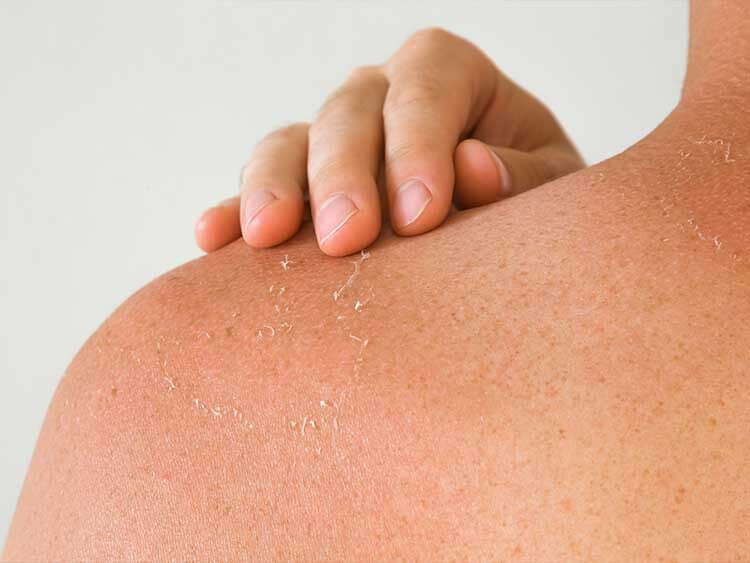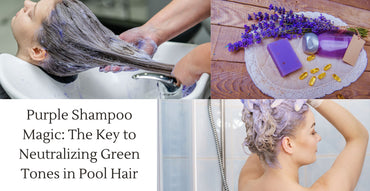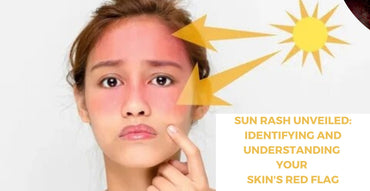When it comes to protecting your skin from the sun’s harmful UV rays, you may have heard of both sunscreen and sunblock. But what is the difference between the two? And which one is best for you? In this guide, we’ll take a closer look at sunscreen vs sunblock and help you make an informed decision about which one to use.
Difference between sunblock and sunscreen

Sunscreen and sunblock are both products that are used to protect your skin from the sun’s UV rays. However, there are some key differences between the two. Sunscreen is a chemical product that absorbs UV rays and prevents them from penetrating the skin. Sunblock, on the other hand, is a physical product that reflects UV rays away from the skin.
Sunblock and sunscreen are different products that work in different ways to protect the skin from the sun’s UV rays. Sunblock is a physical product that reflects UV rays while sunscreen is a chemical product that absorbs UV rays.
Sunblock is typically made with ingredients such as zinc oxide and titanium dioxide, which sit on top of the skin and act as a barrier to UV rays. Sunscreen, on the other hand, is made with ingredients such as oxybenzone, avobenzone, and octocrylene, which are absorbed into the skin and work by absorbing UV rays.
Another key difference between sunscreen and sunblock is that sunblock is typically more opaque and has a thicker consistency than sunscreen. This means that sunblock is more visible on the skin and may leave a white or gray cast, while sunscreen is usually more transparent and has a thinner consistency.
Physical vs. Chemical Sunscreens: What's the Difference?
Physical and chemical sunscreens are two types of sunscreens that protect the skin from the damaging effects of ultraviolet (UV) radiation. They function differently and contain different active ingredients to provide sun protection.
-
Physical Sunscreens (Mineral Sunscreens):
-
Active Ingredients: Mineral active elements like zinc oxide and/or titanium dioxide are found in physical sunscreens. These minerals function by settling on the skin's surface and creating a shield that deflects UV light by reflecting and scattering it.
-
Protection: They offer broad-spectrum UVA and UVB ray protection.
-
Gentle on Skin: Physical sunscreens are thought to be less likely to irritate or trigger allergic reactions, making them a good choice for sensitive skin.
-
Starts Working Right Away: As soon as they are applied to the skin, they begin to work.
-
Possible White Cast: Some physical sunscreens may leave a slight white cast on the skin as a result of the mineral nature of their active ingredients. This white cast may be more noticeable on darker skin tones.
2. Chemical Sunscreens:
-
Active Ingredients: Organic (carbon-based) chemicals like oxybenzone, octinoxate, and avobenzone are found in chemical sunscreens. These substances take in UV rays and convert them to heat, which is subsequently expelled from the skin.
-
Protection: Against UVA and UVB radiation, they usually offer broad-spectrum protection.
-
Lightweight and Absorbing: When compared to physical sunscreens, chemical sunscreens typically have a lighter texture and absorb into the skin more readily.
-
Requires Time to Activate: Chemical sunscreens must absorb into the skin for 20 to 30 minutes after application to start working.
-
Potential Irritation: Certain chemical sunscreen ingredients may cause allergic reactions or skin irritation in certain people. These reactions can be more common in people with sensitive skin.
The decision between chemical and physical sunscreens is frequently influenced by the user's skin type, preferences, and possible sensitivities. When used properly, both can offer significant sun protection. Certain sunscreens mitigate the disadvantages of each type of filter while providing broad-spectrum protection by combining physical and chemical filters. To guarantee sufficient defence against damaging UV radiation, it's critical to take into account a sunscreen's SPF (sun protection factor), broad-spectrum coverage, water resistance, and other features.
Side effects of sunscreen and sunblock
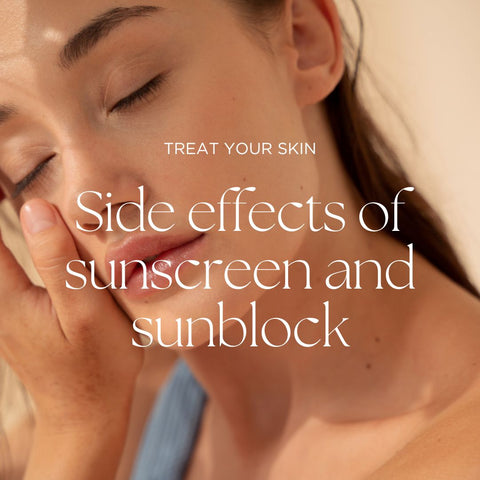
Sunscreen and sunblock both have potential side effects, but most people consider them to be safe. However, some people might be allergic to specific ingredients found in sunblock or sunscreen, which could result in rashes or skin irritation. Some people may develop acne as a result of sunscreen because its ingredients can clog pores and trap bacteria and oil on the skin. Sunblock, on the other hand, may cause skin dryness or flaking because the ingredients in it are drying to the skin. The following are some of the most common sunscreen and sunblock side effects:
-
Skin Irritation or Allergic Reactions: Some people may experience skin irritation, itching, redness, or a rash after applying sunscreen. Allergic reactions to specific ingredients, such as fragrances, preservatives, or chemical filters (such as oxybenzone or avobenzone), can occur in sensitive individuals.
-
Stinging or Burning Sensation: Certain sunscreen formulations, particularly those containing alcohol or chemical filters, may cause a stinging or burning sensation when applied, especially to sensitive skin or areas with cuts or open wounds.
-
Acne Breakouts: Acne-prone or oily skin individuals may experience acne breakouts or worsening of existing acne as a result of occlusive ingredients in some sunscreens, particularly those that are thick or greasy.
-
Eye Irritation: Sunscreen products, particularly those in spray form, can irritate the eyes if they get into them accidentally. Some people may experience eye irritation as a result of chemical filters or fragrances.
-
Heat Sensitivity: Some people may experience increased warmth or heat on their skin after applying certain sunscreens, particularly those with chemical filters. This sensation usually goes away after a short time.
-
White Residue or Streaks: Physical sunscreens containing zinc oxide or titanium dioxide may leave a white residue or streaks on the skin, which is more noticeable on darker skin tones.
It is also worth noting that some sunscreens contain the chemical oxybenzone, which has been linked to coral reef damage. If you are concerned about the environmental impact of your sunscreen, look for oxybenzone-free options.
Sunblock ingredients
Some common ingredients found in sunblock include zinc oxide and titanium dioxide. Zinc oxide is a mineral that sits on top of the skin and acts as a barrier to UV rays. Titanium dioxide is another mineral that is often used in sunblock, which also reflects UV rays away from the skin.
The following are the primary active ingredients found in sunblock:
-
Zinc Oxide: Zinc oxide is a mineral compound that is commonly used in sunblocks. It offers broad-spectrum protection against UVA and UVB rays. Zinc oxide acts as a physical barrier on the skin, blocking and reflecting UV rays.
-
Titanium Dioxide: Another mineral compound found in sunblocks is titanium dioxide. It, like zinc oxide, provides broad-spectrum UVA and UVB ray protection by forming a protective barrier on the skin's surface. It works by reflecting and scattering UV radiation away from the skin.
Both zinc oxide and titanium dioxide are considered physical blockers or sunscreens. They are popular due to their gentle nature on the skin, particularly for those with sensitive skin or who are prone to allergic reactions to chemical sunscreen ingredients. These mineral-based sunblock ingredients are known for their ability to provide effective sun protection while being less likely to cause skin irritation or allergic reactions than some chemical sunscreen ingredients.
Modern sunblock formulations frequently use micronized or nano-sized zinc oxide and titanium dioxide particles to reduce the white cast or chalky appearance associated with traditional sunblocks. These newer formulations aim to provide effective sun protection while remaining cosmetically acceptable and barely visible on the skin.
Look for sunblocks labelled "broad-spectrum" to ensure protection from both UVA and UVB rays. Additionally, some sunblocks may contain inactive ingredients such as moisturisers, emollients, or antioxidants to improve the overall effectiveness and skin-friendliness of the product.
Sunscreen ingredients
Some common ingredients found in sunscreen include oxybenzone, avobenzone, and octocrylene. Oxybenzone is a chemical ingredient that absorbs UV rays and prevents them from penetrating the skin. Avobenzone is another chemical ingredient that is often used in sunscreen, which also absorbs UV rays. Octocrylene is a chemical ingredient that is used to increase the stability of sunscreen, which also helps to absorb UV rays.
Common Allergens in Sunscreen and Sunblock
Sunscreen and sunblock products typically contain various ingredients that might cause allergic reactions in some individuals. Common allergens found in these products can include:
-
Chemical Filters: Some chemical UV filters, such as avobenzone, octocrylene, oxybenzone, and octinoxate, that are present in sunscreens may irritate sensitive people's skin or trigger allergic reactions.
-
Fragrances: To improve the smell of many skincare products, including sunscreens, fragrances are frequently added. However, for some people, fragrances are a common cause of allergic reactions and skin irritation.
-
Preservatives: Several sunscreen preservatives, such as parabens, methylisothiazolinone, and formaldehyde-releasing agents (such as DMDM hydantoin or imidazolidinyl urea), have the potential to cause allergic contact dermatitis in some people.
-
Emollients and emulsifiers: Certain skin types are allergic to certain ingredients, such as lanolin, propylene glycol, or specific alcohols, which are used to improve the texture and consistency of sunscreen.
-
Botanical extracts or essential oils: People who are allergic to these ingredients may experience allergic reactions when exposed to natural plant extracts or essential oils found in some sunscreens.
-
Dyes or colouring agents: Some people may experience allergic reactions or skin irritation as a result of artificial colours or dyes used in sunscreen formulations.
It is crucial to remember that not everyone will experience an allergic reaction, even though these ingredients have the potential to do so. Each person has different allergies and sensitivities to skincare products.
If you suspect an allergic reaction to a sunscreen or sunblock product, stop using it right away. It is best to seek the advice of a dermatologist or other healthcare professional to determine the specific ingredient causing the reaction and to find suitable substitutes. Patch testing can assist in identifying specific allergens to avoid when selecting future skincare products. Individuals prone to skin sensitivities or allergies may benefit from fragrance-free or hypoallergenic sunscreens.
How to choose the best sun protection
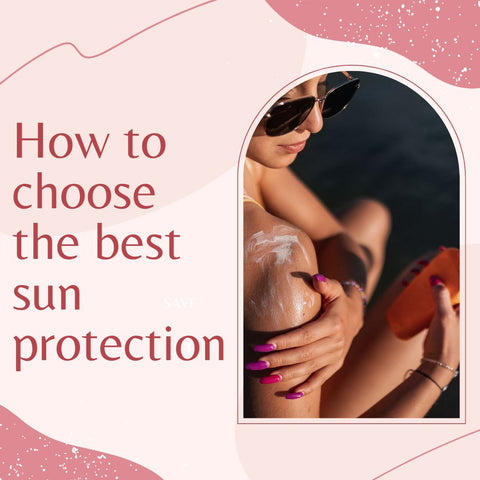
When it comes to choosing sun protection, there are a few things to keep in mind. First and foremost, it is important to choose a product that has a high SPF (Sun Protection Factor). The American Academy of Dermatology recommends using a sunscreen with an SPF of at least 30. If you have any concerns or questions about your skin and sun protection you should consult with a dermatologist. With Clinikally you can get an online dermatologist consultation booked at no time, and get personalized skin treatment recommendation delivered directly to your doorstep.
There is no harm in using both sunscreen and sunblock at the same time. However, it is important to keep in mind that it more difficult to determine if you are getting the proper amount of sun protection. It is best to choose one product that fits your needs and use it as directed. But if using only one, you should also consider the type of activity you will be doing and the amount of sun exposure you will be getting.
-
For example, if you will be spending a lot of time at the beach or swimming, a sunblock with a higher SPF (like 50) may be a better choice.
-
For activities like swimming, a physical sunblock with ingredients like zinc oxide and titanium dioxide is a better choice, as it will not wash off in water and will continue to provide protection.
You may effectively protect your skin from the sun's harmful effects and lower your risk of sunburn, premature ageing, and skin cancer by considering these variables and selecting a sunscreen or sunblock that suits your skin type, activities, and preferences.
Which is the best sun protection for skin?
It is recommended to use sunscreen or sunblock every day, especially when spending time outdoors. It is important to choose a product with a high SPF and to reapply as directed. It is ultimately up to the individual and their specific needs. However, a dermatologist may recommend a physical sunblock with ingredients like zinc oxide and titanium dioxide for those with sensitive skin or for activities where the skin is more likely to be exposed to water.
For daily use on the face, a chemical sunscreen with a high SPF is a good choice. It is important to choose a product that is non-comedogenic and suitable for the face. An SPF of 30 or higher is recommended for daily use. An SPF of 50 provides a higher level of sun protection, but it is important to remember that no sunscreen can block all UV rays and it is important to reapply as directed.
You should also consider the ingredients of the product, especially if you have sensitive skin or are prone to allergies. If you have sensitive skin, you may want to choose a sunscreen or sunblock that is fragrance-free and hypoallergenic.
SPF Ratings and What They Mean for Protection
SPF (Sun Protection Factor) is a measure of how well a sunscreen or sunblock protects the skin from the sun's ultraviolet (UV) rays, particularly UVB rays that cause sunburn. Here's what SPF ratings mean in terms of sun protection:
-
SPF Ratings: SPF ratings typically range from 15 to 100 or higher. The UVB protection level of the sunscreen is indicated by the number.
-
Degree of Protection: SPF calculates the difference between wearing sunscreen and not wearing it and how long you can stay in the sun without getting sunburned. For example: SPF 15 blocks about 93% of UVB rays, SPF 30 blocks about 97% of UVB rays, and SPF 50 blocks about 98% of UVB rays.
-
Higher SPF Does not Mean Proportional Protection: As the SPF number increases, the difference in protection between SPF levels becomes less significant. For example, SPF 30 does not provide twice the protection of SPF 15; rather, it provides slightly more but not double the protection.
-
Reapplication is Critical: Regardless of the SPF level, sunscreen should be reapplied regularly, especially after swimming, sweating, or prolonged sun exposure, as it can wear off or become less effective over time.
-
Broad-Spectrum Protection: While SPF measures protection against UVB rays, which cause sunburns, it is critical to use a sunscreen that also protects against UVA rays. Look for "broad-spectrum" products to ensure protection from both UVA and UVB rays.
-
Personal Factors: Sunscreen effectiveness varies depending on skin type, time of day, amount applied, activities, and other factors. It is crucial to combine sunscreen use with other preventative strategies like looking for shade, donning protective clothes, and applying sunscreen since no sunscreen offers 100% protection.
-
SPF and Sunburn Prevention: Sunburns can be avoided, as well as the risk of UV-induced skin damage and skin cancer, by using sunscreen with an appropriate SPF level, applying it liberally and frequently, and adhering to recommended sun safety precautions.
Reapplying sunscreen correctly, keeping it on hand, and adhering to sun safety precautions are essential for effective sun protection, even though a higher SPF can offer more protection. Furthermore, especially during the hottest parts of the day, sunscreen should only be one component of an all-encompassing sun protection strategy that also includes looking for shade, and donning hats, sunglasses, and protective apparel.
Water-Resistant vs. Waterproof Sunscreen
The terms "water-resistant" and "waterproof" are used interchangeably to describe sunscreens' ability to remain effective in the presence of water or sweat, but they have different meanings in terms of water resistance.
-
Water-Resistant Sunscreen: Sunscreens labelled "water-resistant" are intended to be effective for a specific amount of time (usually 40 or 80 minutes) of water exposure or sweating before requiring reapplication. These sunscreens provide some protection during water-related activities such as swimming or sweating, but their effectiveness may deteriorate over time in the water. Reapplication is required after the specified time or after towel drying, as water can rub off or dilute the sunscreen, reducing its efficacy.
-
Waterproof Sunscreen: The term "waterproof" used to be common, but it is no longer permitted on sunscreen labels due to regulatory changes, as no sunscreen can be completely impervious to water. Because no sunscreen can provide indefinite protection against water exposure, and all sunscreens eventually wear off or become less effective when exposed to water, sweating, or towel-drying, the term "waterproof" was misleading. The FDA has updated sunscreen labelling regulations to use the term "water-resistant" rather than "waterproof," emphasising the importance of reapplication, particularly after swimming, sweating, or towelling off.
When applying water-resistant sunscreen, remember to:
-
Apply it liberally and evenly before going out in the sun.
-
Reapply as needed, especially after swimming, sweating, or towel drying.
-
Follow the reapplication instructions (usually every 40 or 80 minutes) to ensure continued protection.
It is critical to read and follow the water resistance and reapplication instructions on the sunscreen label. Remember that no sunscreen is completely impervious to the effects of water or sweat, so reapplying sunscreen regularly, as well as taking other sun safety precautions (such as seeking shade and wearing protective clothing), are essential for effective sun protection, especially during prolonged outdoor activities.
Is sunscreen better than sunblock?

Both sunscreen and sunblock protect the skin from the sun's harmful ultraviolet (UV) rays, but they work differently and have distinct characteristics:
-
Sunscreen typically contains chemical filters or a combination of chemical and physical blockers. Physical blockers create a protective barrier on the skin's surface to reflect and scatter UV rays, whereas chemical filters absorb UV rays and convert them to heat. Sunscreens are frequently preferred because of their lightweight and transparent formulations, which make them easier to apply and less likely to leave a visible residue on the skin. They may be suitable for daily use and provide a variety of SPF options to accommodate different skin types and preferences.
-
Sunblock typically contains physical blockers such as zinc oxide or titanium dioxide, which form a physical barrier on the skin, reflecting and scattering UV rays away from the skin's surface. Sunblock is frequently preferred for its gentle nature on the skin, particularly for those with sensitive skin or who are prone to allergic reactions to chemical sunscreen ingredients. It may leave a more visible white cast or residue on the skin, especially in older formulations, though newer formulations aim to reduce this effect.
Neither sunscreen nor sunblock is inherently "better" than the other; rather, their effectiveness is determined by personal preferences, skin type, and specific needs. Both types of products can provide adequate sun protection when used correctly and reapplied as directed.
In conclusion, both sunscreen and sunblock are effective ways to protect your skin from the sun’s UV rays. The best choice for you will depend on your individual needs and preferences. Sunblock is a physical product that reflects UV rays away from the skin and is often used for activities like swimming or spending time at the beach. Sunscreen is a chemical product that absorbs UV rays and is often used for daily use or for activities where you may be less likely to get wet.
It is important to choose a product with a high SPF, to consider the ingredients if you have sensitive skin and also to think of the environmental impact of the product. Sunblock with zinc oxide and titanium dioxide are better options than products with oxybenzone.
The Role of Sun Protection in Anti-Aging
Sun protection is essential in anti-aging skincare and can have a significant impact on the skin's health and appearance. Prolonged and unprotected exposure to the sun's ultraviolet (UV) rays is one of the primary causes of premature skin ageing. Here's how sun protection can help with anti-aging:
-
Photoaging Prevention: UV rays, particularly UVA and UVB rays, can cause photoaging, which results in wrinkles, fine lines, age spots, and a loss of skin elasticity. Sunscreen protects the skin from UV damage, which helps to prevent or minimise these signs of ageing.
-
Reduced Wrinkles and Fine Lines: UV radiation can cause collagen and elastin fibres in the skin to break down, resulting in wrinkles and fine lines. Regular use of sunscreen aids in the preservation of collagen, the maintenance of skin elasticity, and the reduction of the appearance of lines.
-
Hyperpigmentation Prevention: Sun exposure can cause hyperpigmentation, such as sunspots or uneven skin tone. Sunscreen helps to prevent melanin overproduction, lowering the risk of dark spots and pigmentation irregularities.
-
Protecting Against Skin Cancer: Being in the sun increases the chance of getting skin cancers such as melanoma, basal cell carcinoma, and squamous cell carcinoma. By lowering the risk of skin cancer, sunscreen use promotes the longevity and general health of the skin.
-
Preservation of Skin Texture: Sunscreen helps keep skin smoother and more even by protecting it from UV rays, which delays the appearance of roughness or unevenness linked to sun damage.
To reap the benefits of sun protection for anti-aging:
-
Select Broad-Spectrum Sunscreens: Look for sunscreens with the label "broad-spectrum," which indicates that they protect from UVA and UVB rays.
-
Use Sunscreen Every Day: UV rays can penetrate clouds and cause skin damage, so even on cloudy or overcast days, use sunscreen with an SPF of 30 or higher.
-
Apply Broadly and Reapply: At least 15 to 30 minutes before venturing outside, liberally apply sunscreen to all exposed skin areas. Reapply every two hours, or more often if you are perspiring or swimming.
-
Combine with Other Measures: While sunscreen is an essential component of sun protection, it should be used in conjunction with other strategies such as finding shade, donning hats, sunglasses, and protective clothes, as well as avoiding the hottest parts of the day when feasible.
Sun protection is essential for maintaining youthful-looking skin, delaying premature ageing, and lowering the risk of sun-related skin damage, and it should be part of your daily skincare routine.
Best Practices for Applying Sunscreen and Sunblock
Applying sunscreen or sunblock correctly is critical for effective protection against the sun's harmful ultraviolet (UV) rays. Here are some guidelines for using sunscreen and sunblock:
-
Choose the Right Product: Choose a sunscreen with broad-spectrum protection against both UVA and UVB rays. Select a sunscreen with an SPF (Sun Protection Factor) of 30 or higher for daily use.
-
Apply Sunscreen Generously: Apply sunscreen liberally to all areas of exposed skin, including the face, neck, ears, arms, legs, and any other exposed body parts. When wearing a swimsuit, apply about a shot glass-sized amount (approximately one ounce) to cover the entire body.
-
Apply Sunscreen Early: Apply sunscreen at least 15-30 minutes before going outdoors to allow it to be absorbed by the skin and provide adequate protection.
-
Reapply Sunscreen Regularly: Reapply sunscreen every two hours, or more often if swimming, sweating profusely, or towelling off. Reapplication is critical for maintaining security.
-
Cover All Areas: Do not forget to check the ears, the back of the neck, the tops of the feet and the lips. Consider using a lip balm with SPF protection to protect your lips.
-
Be Thorough and Rub It In: Rub sunscreen into the skin until it is absorbed to ensure even and thorough coverage. Take note of any missed spots. Cover areas with thin or delicate skin, such as the tops of your feet and the area around your eyes.
-
Consider Sunscreen Sprays or Lotions: Sunscreen sprays or lotions may be easier to apply to larger areas of the body. However, use caution and apply them in a well-ventilated area to avoid inhalation.
-
Check Expiry Dates: Check the expiration date of your sunscreen. Sunscreen that has expired may no longer provide adequate protection.
-
Combine Sunscreen with Other Sun Protection Measures: Apply sunscreen as part of an all-encompassing sun protection approach, especially from 10 AM to 4 PM, which also includes finding shade, donning hats, sunglasses, and protective apparel.
-
Be Mindful of Sensitivities: If you have sensitive skin or allergies, choose sunscreens labeled as "hypoallergenic" or "for sensitive skin" and test on a small patch of skin before full application.
Remember that sunscreen should be part of your daily skincare routine, not just during sunny days. Even on cloudy or overcast days, UV rays can penetrate clouds and cause skin damage. Consistent and proper application of sunscreen is key to effective sun protection and reducing the risk of sunburn, premature aging, and skin cancer.

